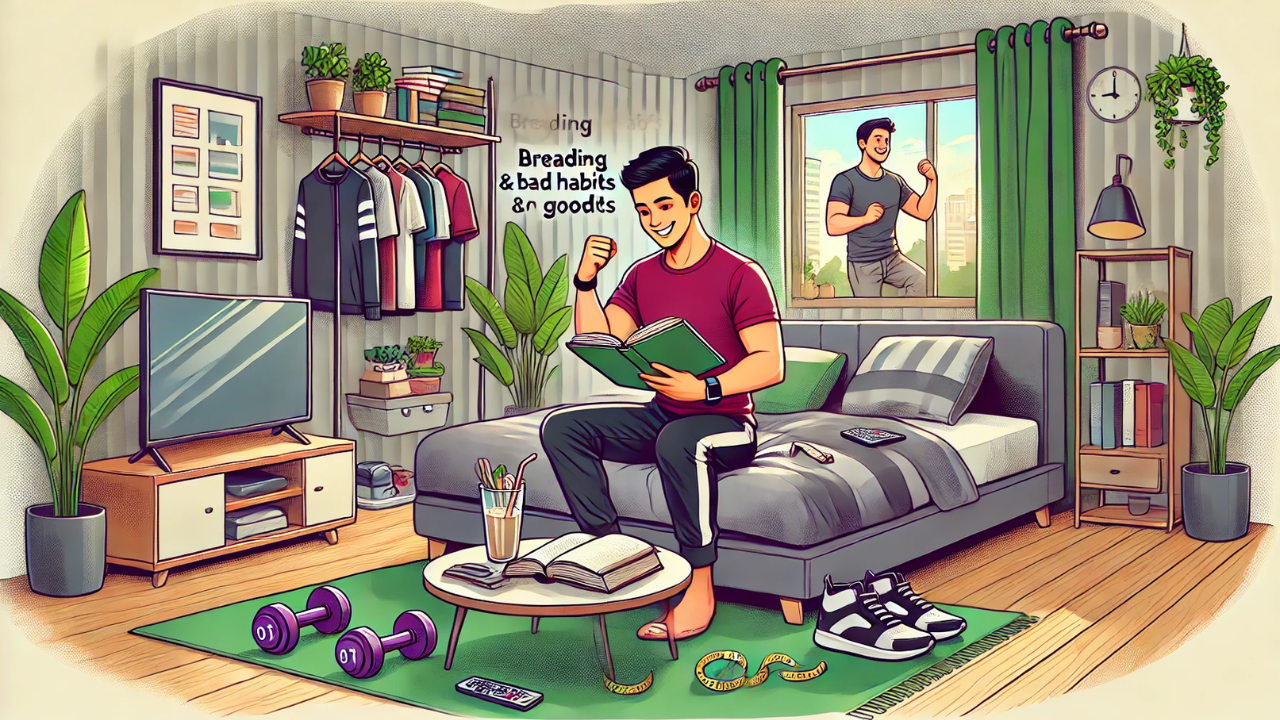
Do you ever find yourself stuck in a cycle of bad habits, wondering why it’s so hard to break free? You’re not alone. In his groundbreaking book “Atomic Habits,” James Clear offers practical advice on how to find and fix the causes of bad habits. Let’s dive into these insights through the relatable story of Raj, an Indian professional who turned his life around by tackling his bad habits.
Raj was a mid-level manager at a bustling IT company in Bangalore. Despite his professional success, Raj struggled with several bad habits. He often stayed up late watching TV, skipped his morning workouts, and frequently indulged in junk food. His habits left him feeling exhausted, unhealthy, and unproductive. Desperate for a change, Raj turned to “Atomic Habits” for help.
Identifying the Causes of Bad Habits
One of the first lessons Raj learned from “Atomic Habits” was the importance of identifying the root causes of bad habits. James Clear outlines a simple framework to understand these habits:
- Cue: The trigger that initiates the habit.
- Craving: The desire for the reward.
- Response: The actual behavior or habit.
- Reward: The satisfaction and benefit derived from the habit.
Raj’s TV Habit
- Cue: After a long day at work, Raj would slump on the couch.
- Craving: He craved relaxation and entertainment.
- Response: He would turn on the TV.
- Reward: Raj felt temporarily relaxed and entertained.
Finding the Root Cause
Raj realized his TV habit was a way to unwind after a stressful day. The root cause wasn’t the TV itself but his need for relaxation and stress relief.
Fixing Bad Habits
Armed with this understanding, Raj applied Clear’s strategies to fix his habits:
- Make It Invisible: Raj moved his TV remote to a less convenient location.
- Make It Unattractive: He reminded himself of how tired he felt the next day after staying up late.
- Make It Difficult: Raj set a rule that he could only watch TV after completing a 30-minute walk.
- Make It Unsatisfying: He kept a journal to track how he felt after watching TV late into the night.
Creating Good Habits
Instead of just eliminating bad habits, Raj also focused on building good ones:
- Make It Obvious: He placed his workout clothes by his bed to remind him to exercise in the morning.
- Make It Attractive: Raj rewarded himself with a healthy smoothie after every workout.
- Make It Easy: He started with short, 10-minute workouts and gradually increased the duration.
- Make It Satisfying: Raj tracked his workouts and celebrated his progress.
The Role of Environment
Clear emphasizes the importance of environment in shaping habits. Raj took this to heart and made several changes:
- Workplace: He organized his desk to minimize distractions, keeping only essential items within reach.
- Home: Raj created a relaxing reading nook to replace his TV habit, filled with books he was excited to read.
Raj’s Transformation
Over several months, Raj noticed significant changes. He felt more energetic, healthier, and productive. His new habits became second nature, and he found joy in activities that genuinely enriched his life.
Turning Failure into Success you need to know
FAQs
How long does it take to break a bad habit?
It varies, but consistency and persistence are key. Some habits can change in a few weeks, while others may take months.
Can small changes really make a difference?
Absolutely! Small, incremental changes can lead to significant transformations over time, a core principle of “Atomic Habits.”
What if I relapse into old habits?
It’s normal. Recognize the relapse, understand the triggers, and get back on track. Consistency is more important than perfection.
Wrapping Up
By understanding the cues, cravings, responses, and rewards of his habits, Raj was able to transform his life. If you’re struggling with bad habits, remember that change is possible with small, consistent efforts. Dive into “Atomic Habits” for more insights and start your journey toward a better you.

